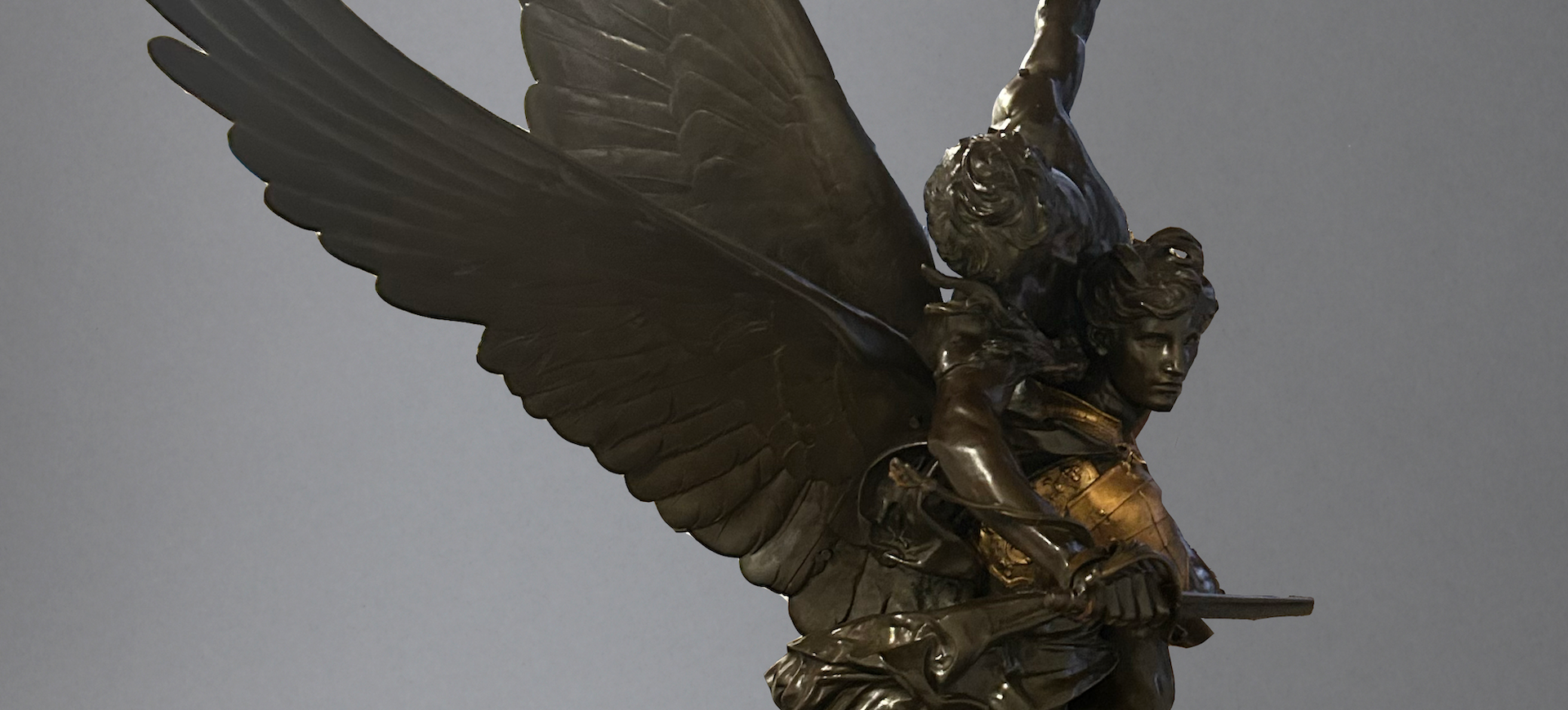
NEWS
Gloria Victis by Mercié
This bronze is exceptional in more ways than one. First, it is exceptional in terms of its size: it is a half-life-size cast, reduction no. 1, measuring three-fifths of the original. There are believed to be no more than a dozen examples in existence, including the only identified museum example, which is held by the Musée des Augustins in Toulouse, the sculptor's birthplace.
Above all, this is not just any bronze, but the chief model – the casting matrice – partially reassembled as an example, with mounting pins visible in certain places. This bronze is mentioned in a note dated 29 January 1912 on the model's production sheet: ‘the sculptor authorises the editor to assemble a proof and put [model] number one on sale’.
A rare chief model and the inheritance of Barbedienne
This type of preparation is extremely rare for a bronze. It was sometimes designed as an exhibition model to showcase the quality of the casting and the skill of the founder. By the early 20th century, Barbedienne had become the world's leading specialist in monumental castings and the foremost founder of his time.
The original bronze statues, measuring over three metres in height, are not available in private collections. They can be found at the Petit Palais museum in Paris, the Glyptotek in Copenhagen and, as painful reminders of France's defeat in 1871, in public squares in many major French cities (Agen, Bordeaux, Châlons-en-Champagne, Cholet, Niort, etc.).
Artistic purpose and Commercial success
As for the subject matter, Gloria Victis is, along with David vainqueur de Goliath, one of the artist's two masterpieces with political connotations. It was produced just after the defeat in 1872, when the sculptor was still young, and sent to the 1874 Salon where, coming into its own, it was a resounding success and was purchased by the State.
His genius is already evident in the title: Gloria Victis, glory to the vanquished. In a vertical and dynamic composition, the subject is softened by the vitality he infuses into it: Glory seems to fly with the young fighter as if to carry him away to a happy immortality. The composition is treated in a neo-Florentine style, where the beauty of the characters could almost make one forget the spirit of defeat: aesthetics prevail over the subject.
This explains the group's editorial success, except for the larger pieces. Experience shows that large formats were shunned by bronze enthusiasts in the 19th century: the most popular size was half our own, as it could be placed ‘reasonably’ on a piece of furniture, chest of drawers or column in the interiors of the time.



